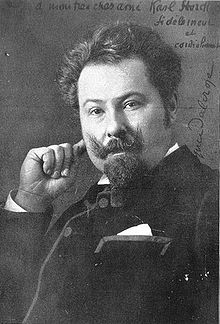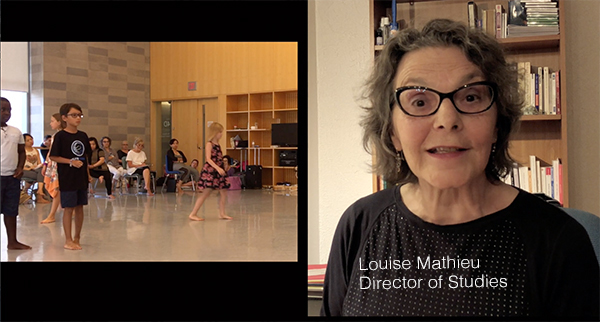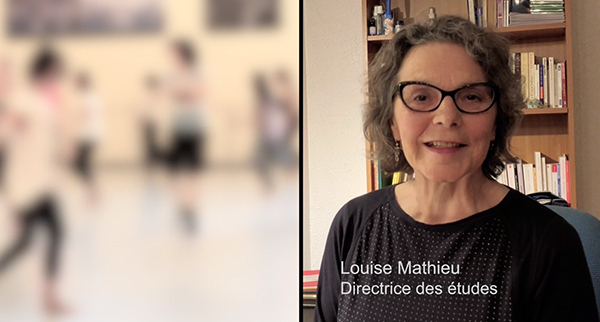 Who was Dalcroze?
Who was Dalcroze?
Émile Jaques-Dalcroze (1865-1950) was a Swiss musician, pianist, composer and educator. Dalcroze developed his unique approach to music education while teaching Harmony and Solfège at the Conservatoire de Musique de Genève. In order to remedy the mechanical and arrythmic approach to music-making he observed in his students, Dalcroze began experimenting with integrating the body into music education. He discovered that when the natural motions of the body were engaged, his student's musical perception and performance were heightened and transformed. Over his lifetime, Dalcroze developed a comprehensive methodology for exploring musical subjects through the body, with the ultimate goal of helping students convert musical knowledge into musical understanding.
Dalcroze Eurhythmics is based on the premise that the human body is the source of all musical ideas. Physical awareness or kinaesthetic intelligence is one of our most powerful senses, yet it is often taken for granted. We use it in everyday situations to keep our balance, judge distances, and manipulate the objects around us. In a similar way, we must move with flexibility, fluidity, and economy in order to play a musical instrument with both passion and skill. Dalcroze Eurthythmics allows us to gain a practical, physical experience for music before we theorise and perform. This ensures that the whole person (not just the fingers and the brain) is educated in the development of musicianship and artistry.
Dalcroze Eurhythmics provides a concrete approach (movement) to an abstract art (music). In learning about time, space, energy, weight, and balance through movement, we explore the same elements in music in a wholesome way. It is an education through and for music, rather than an education about music.
The pedagogical approach has a three-part structure: Eurhythmics, Solfège Rhythmique, and Improvisation.
Eurhythmics (also known as Rhythmics)
Eurhythmics classes engage the whole body in the physical exploration of musical rhythm, melody, harmony, form, etc. This involves locomotion (moving through space) and gesture (while stationary). Our bodies gain a physical memory of moving to music. Rhythmic exercises refine body memory in terms of technical accuracy and artistic sensibility. It is this refinement of our physical memory that will ultimately inform and improve our instrumental and vocal performance. Eurhythmics classes examine the relationship between time, space, and energy in music and movement. They focus on technical mastery of rhythmic ideas found in various musical repertoires, uniting the technical and expressive components of performance. In eurhythmics classes, technique becomes the vehicle for musical expression.
Solfège Rhythmique
Solfège rhythmique connects eurhythmic training to ear training. Students use movement, gestures and improvisation to reinforce aural training concepts, with the goal of developing acute inner-hearing (muscular/kinesthetic memory of sound). This body-ear relationship allows students to recall, imagine, and audiate musical information away from a sound source. Dalcroze solfège is based on the fixed-do system. Fixed-do is used to teach pitch functions and interrelationships, and to develop pitch memory.
Improvisation
Communicating and teaching musical material through an instrument tests the flexibility, fluidity, and economy of the Dalcroze-trained musician. Improvisation classes involve the presentation of a particular musical idea, using all the means at the disposal of a composer, instantaneously. For example: play or sing a theme which contains mixed meter, features a tritone in the melody, and can be sung in canon. This capability is the foundation of the Dalcroze teacher's Art. As a class of students move through space, the teacher gives musical cues with the piano, the voice, or a percussion instrument. Such stimulus engages the ear, and makes us want to move. High-quality stimulus cultivates technical accuracy and artistic sensibility. Concern for the physical origins of music has a profound effect on the Dalcroze-trained performer. Improvisation provides the aesthetic and kinaesthetic building blocks for quality music making.
Note: This description is a compilation of content from the Dalcroze Society of Australia and the Dalcroze Society UK, and used with their permission. It was edited by Caron Daley and Laura Ono.



Follow Us